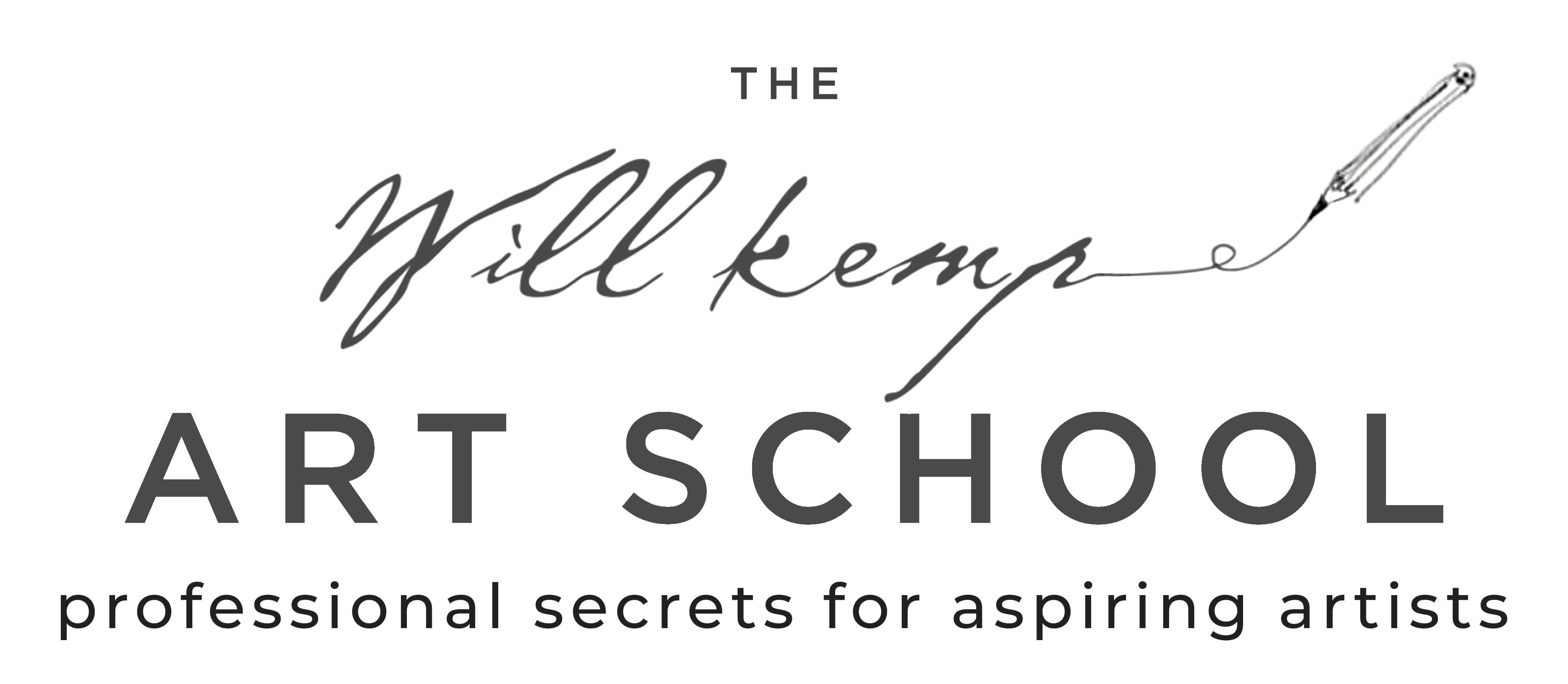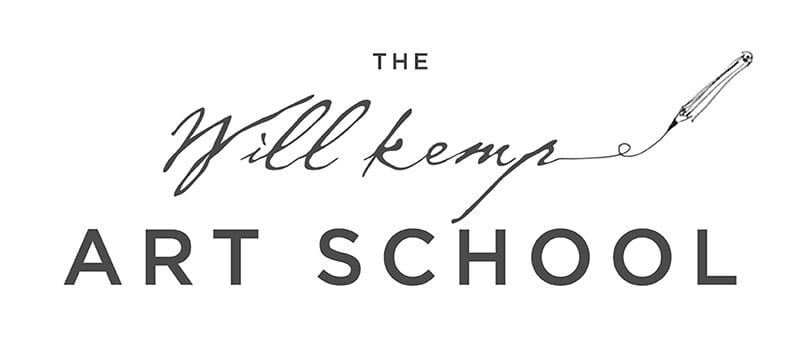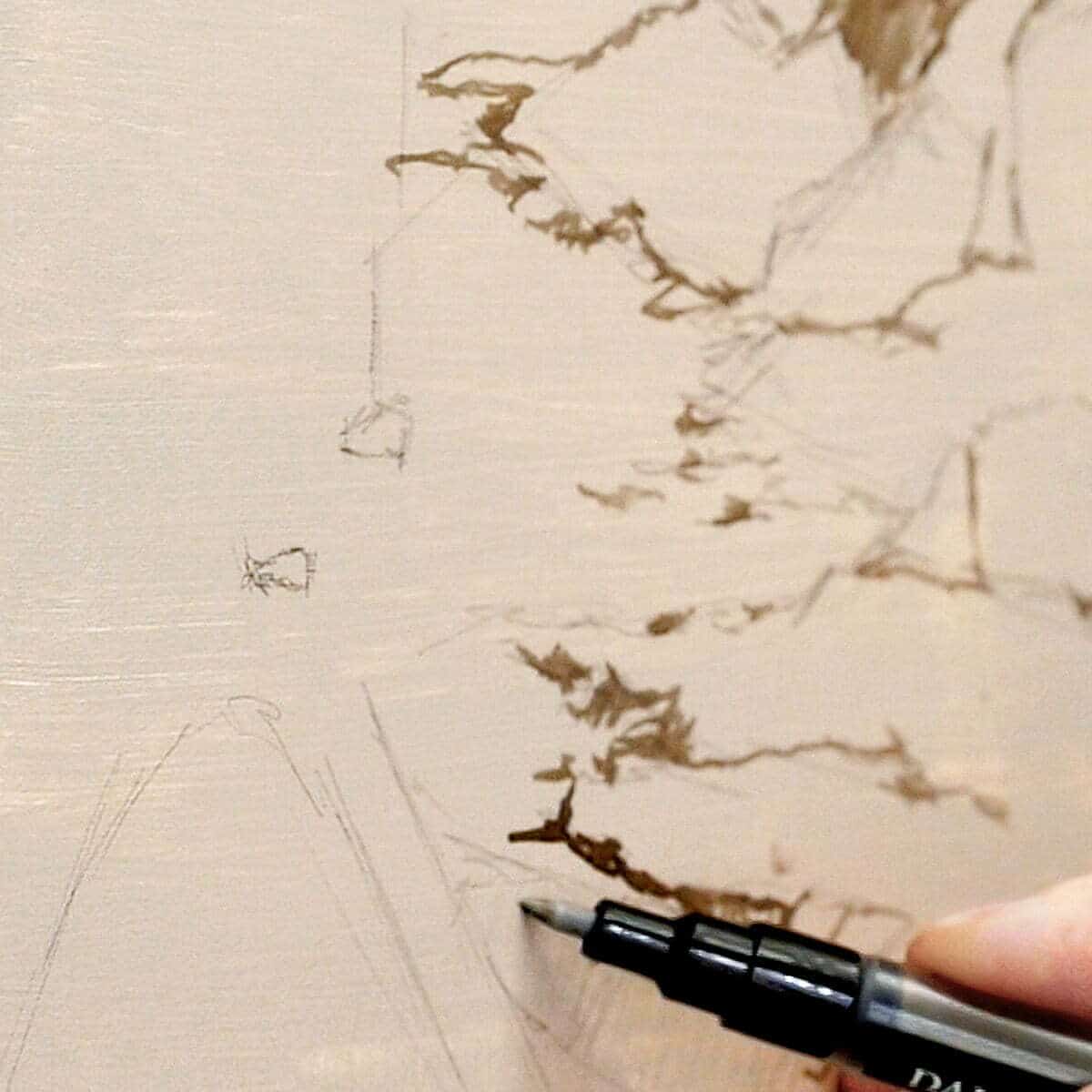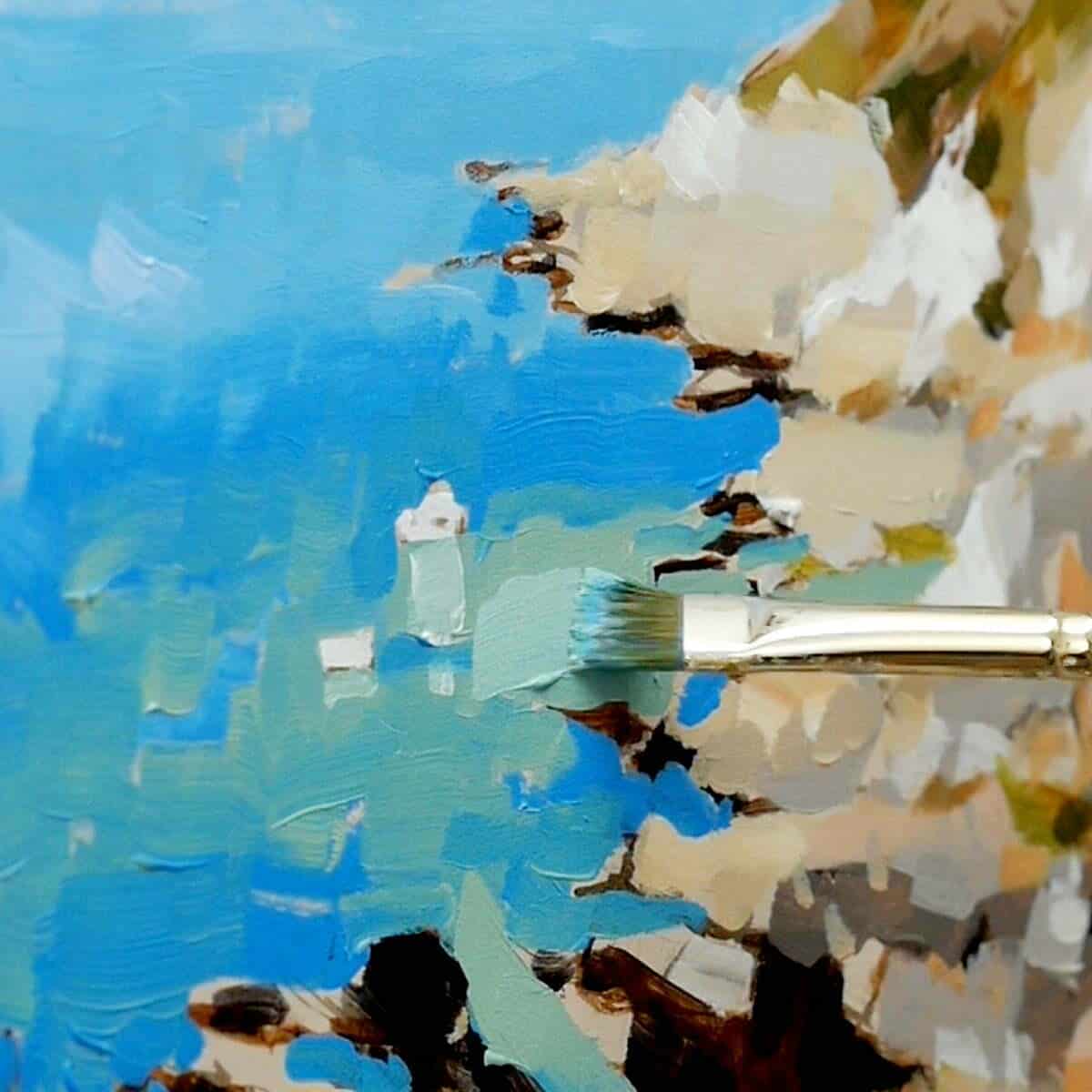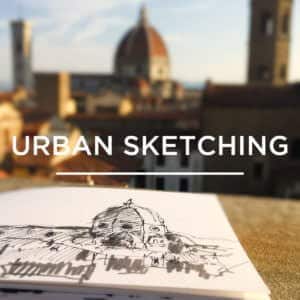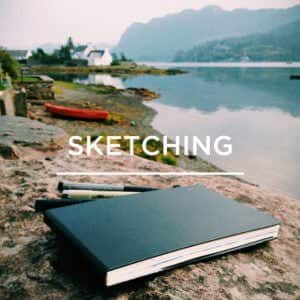A Cornish Seascape Acrylic Course
(Scroll down ↓ to Add to Cart)
Morning class, I’m Will Kemp and welcome to a Cornish Seascape, the second painting in my series of short courses.
‘The Morning Paintings” are designed to be easy-to-follow single project courses, you can complete them in just a few 1 hr painting sessions.
Each one follows the same approach:
- A single painting from start to finish.
- A limited colour palette.
- A handful of brushes.
- A small canvas.
- A simple subject.
- Taught over 3 x 45-minute lessons.
Simple Impressionistic Brushstrokes
The reason I’ve started this series is sometimes you can find yourself overthinking the end result of a painting, and the pressure of having to make it a masterpiece can keep you from even starting!
I find setting aside 1hr every morning really helps overcome this feeling of being overwhelmed, in this second short course, we’re tackling a glittering seascape from the south coast of Cornwall.
This course has been designed with small, bite-sized lessons, you’ll be building your knowledge and your painting without the task becoming too much. With just a handful of materials, I’m keeping it very simple, but we’ll still get a good range of mixes even using a minimal palette.
In this seascape, the 2 sailboats give us a great focal point, they also give a real sense of scale. Having a contrasting focal point against a smooth blend of a sky and cooler softer tones of the far hills sends your eye into the distance. Framed by contrasting values of dark rocks, set against the gradation of the depth of tones within the sea creates realism.
We’ll cover the preparation of your surface & drawing out, mixing colour strings and blocking-in. Starting off with just two colours, showing how important it can be to get a grounding in your painting, establishing a tonal range so you can start to judge everything from that initial set-up.
Release the Pressure of Perfection
We build up thin layers of watery washes followed by thick impasto marks using simple impressionistic brushstrokes. This course will help you to ‘loosen up’ whilst the step-by-step instruction will keep you on track.
It’s been kept to be really really simple, so when we come to add that punch a vibrancy of colour, later on, all of a sudden your painting comes together in an instant, from all the work we’ve done up to that stage.
And in the final lesson, we will look at introducing the perfect pigment for turquoise seas, we then introduce dappled light. By having these dashes of reflections, it really evokes that memory of a glimmering sea.
So find a comfy seat, a strong cup of coffee or a pot of tea, and see what can be achieved in a 1-hour painting slot.
Gain confidence, and embrace the process of practice!
You could make a big step forward in the painting every day, and after three days, or even over a weekend, I think you will be absolutely amazed at how far your painting has progressed!
What’s in the Course?
- 1 x Impressionistic Seascape from start to finish, based in the studio working from a reference image.
- 3 x downloadable video lessons, split into separate chapters that follow on sequentially. Step-by-step instructional videos so that you can follow along at your own pace.
- Each stage is a detailed yet easy-to-follow process.
- Lifetime access, downloadable on separate devices.
- One-time payment
- Downloadable jpeg reference images and reference line drawings.
- Printable Class materials list
- 2 hrs of detailed video instruction.
(You will need a printer or print shop for the reference image)
£35.00
Description
Acrylic Impressionistic Seascape – Single Project Course
This course will help you create an impressionistic seascape painting with painterly brushstrokes and vivid turquoise seascapes.
We’ll cover set-up, colour mixing and brush techniques; the step-by-step instruction will keep you on track.
Who is the course for?
I’ve designed this acrylic seascape painting course with the absolute beginner in mind; you’ll be guided through the basics of working with acrylics, learn the power of a limited palette, then move on to choosing accurate pigments to achieve the right effect.
Imagine going to your paint box, opening up the lid and picking out just three brushes. That’s all you need to complete the painting.
From the reference image, everything has been set out, a simple drawing to work from with a step-by-step plan to follow.
You only need to focus on the next step.
You’ll be using simple brush techniques and materials, so even if you’re completely new to painting, you’ll get great results!
What materials will I need?
We’ll only use seven colours, and that includes white, and if you’ve been following some of my other courses, you will have most, if not all, of the colours already.
“One day Boudin said to me, ‘Learn to draw well and appreciate the sea, the light, the blue sky.’ I took his advice.” – Claude Monet.
What are the colours?
- Titanium White – (Golden Heavy Body Acrylics)
- Cadmium Yellow Light – (Golden Heavy Body Acrylics)
- Burnt Umber – (Golden Heavy Body Acrylics)
- Raw Umber (Golden Heavy Body Acrylics)
- Ultramarine Blue – (Golden Heavy Body Acrylics)
- Permanent Alizarin Crimson – (Winsor & Newton Acrylics)
- Phthalo Blue, Green Shade – (Golden Heavy Body Acrylics)
And Brushes?
- Synthetic Round – Size 4, Rosemary & Co, Designer series 344, short handle.
- Evergreen Short Flat – Size 4, Rosemary & Co, long handle.
- Isabey Isacryl – Size 6, Filbert.
- Princeton Aspen Round – Size 4 Please note: I only use this brush, Princeton Round, for four brushstrokes, so not essential.
Will I be able to download the video lessons?
Yes, the course is delivered by a series of downloadable video lessons that are yours to keep forever.
What will I achieve at the end of the course?
You’ll have created a fab contemporary seascape painting, gained confidence, lost the pressure of perfection, and embraced the process of practice!
Lesson Breakdown

Lesson One
Preparation & Drawing Out
Learn how to choose a colour for our coloured ground, giving us a great base to work colours on top of and prepare the surface for painting. We’ll then draw out, thinking in triangular shapes all focused towards the focal point of the two boats.
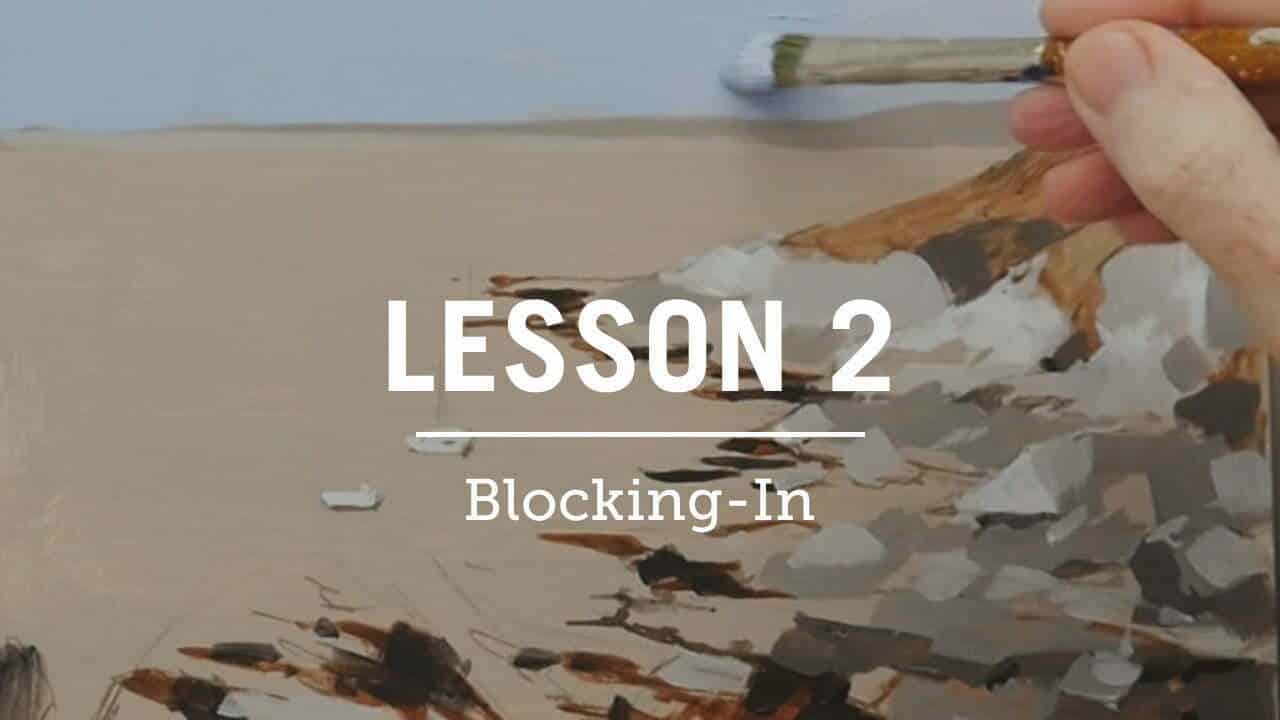
Lesson Two
Blocking-In
Create a value map to get a balance of how all the tones are working together just with the Burnt Umber in a monochrome study. Then we’ll introduce areas with high contrast to draw the focus of the boats and send the eye into the hills and sky beyond. Working through these value relationships in the early stages as if it was a drawing or watercolour, so we’ve really got a plan.

Lesson Three
Full Palette
Even though I’m a big fan of having a limited palette of colours, sometimes the problem really is in the pigment that you’re using!
In this last lesson, we introduce a more intense colour to enable us to reach the right colour notes, and suddenly all our muted tones that we’ve established sit into the canvas and all the brightness of the sea and the vividness pop out.
Course Delivery
Course Delivery
I’ve taken care to film everything from my perspective so you can see exactly what I’m doing as we go through the entire painting process in real-time.
- Downloadable Full-colour reference photograph
- Downloadable Line Drawing
- Downloadable Value Scale
This course has been developed with a beginner in mind, carefully going through the steps at a pace that introduces new colours and techniques slowly.
How is the course delivered?
When you purchase the course, you will receive an email with all the downloadable video links to the course. You then have to download and save the Video Lessons onto your home computer/iPad.
3 Downloadable Step-by-Step Video Lessons.
With 2 hours of detailed video instruction that once downloaded – you have any time, anywhere access.
A ‘Getting Started & Materials List PDF‘ – which includes your materials list.
JPEG reference image, including the photo reference I demo with, a copy of my pencil sketch for the line drawing.
The video files are large (2.5GB) so you need a broadband internet connection and enough space on your computer hard drive.
Please note: You will not receive a DVD.
Cut by the Artist
I filmed, edited, and coloured the course myself (with a little help from Vanessa!) rather than working with a production company. Artists have different needs than editors so I wanted to cut the course like an artist, showing you exactly what I wanted to see when I was learning. I show all the real-time brushstrokes for the paintings so you don’t miss a step.
There are 3 main camera views I cover:
An over-the-shoulder view of the work – so you can see how I build up the painting as if you were standing behind me in the studio.
A close-up of the brush contacting the canvas – with extreme close-ups, so you can see the grain of the canvas and the bristles in the brush.
Stable shot of the palette for when I pick up paint – see exactly how I mix colours. There is nothing worse than when the brush disappears from view, only to reappear with some fantastic new colour. Where did that colour come from?! How did it get mixed?
The palette view is very important, and not just at the beginning of the video. I want to show you every single mix I make, so I film with the palette directly next to the painting, then you can see shots of the palette throughout the course and gain a sense of my approach to colour mixing.
Colour Corrected Footage
Filmed under constant colour balanced conditions, so the paint colours are as accurate as can be. (Computer monitor screens and print-outs can vary)
Real-time filming – No long jumps in progress
I don’t like long jumps in progress when the paintbrush goes off-camera, the shot changes and suddenly the picture has seemed to drastically improve.
I include all the stages so you can clearly see the progress of a work.
Course Requirements
Course Requirements
Requirements for the Course
A broadband internet connection – the files sizes for the video lessons are quite large (2.5GB in total) so can take a while to initially download (depending on your internet speed.) Once downloaded, they are yours to keep forever, watch without buffering or take to the garden and watch away from an internet connection!
Enough free space on your Computer or iPad – You can download the files to a separate USB stick if you need extra storage.
A Colour Printer – to print out the reference images or access to a Print Shop.
Photo Printer Paper – I use Epson Archival Matte or Epson Photo Glossy.
1 hr per painting session – You’ll need to be able to dedicate 1hr for 3 painting sessions.
FAQs
A Cornish Seascape Acrylic Course
Forever! Once you have downloaded the course, the videos are yours forever to watch as many times as you like.
Yes, there are reference images in jpegs and line drawings to work alongside from.
Yes, there is a line drawing you can work from and I go through the drawing process in the course.
We accept all major credit and debit cards such as Visa, Mastercard. We also accept Paypal.
Yes, you could follow along with the course with Oils or Water-Mixable Oils. There are a couple of tweaks you’d have to be aware of. The coloured ground will take longer to dry, and you’d have to spray fixative on the drawing before painting, but after that, the colour mixing and approach would be very similar.
Send me an email, my direct email is: [email protected] and I’ll do my best to help.
The shopping cart with convert to your local currency. You can use a currency converter to get an idea of the current exchange rate: https://www.xe.com/currencyconverter/
I’ve tried to keep the materials small, so we can focus on the process.
Here is a full materials list: Cornish Seascape Materials PDF
